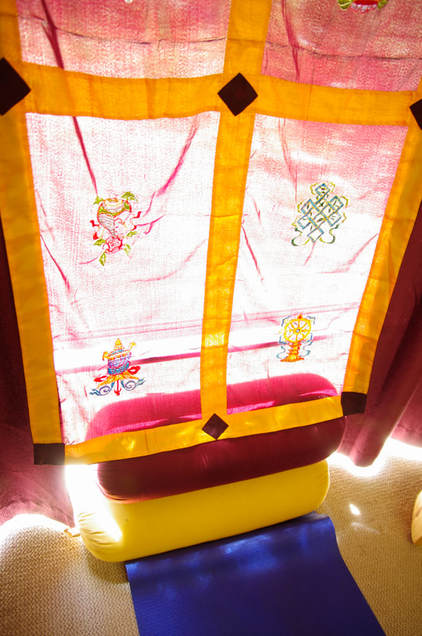 Since returning from my retreat I have fallen in love all over again with my meditation practice, and love spending 20-30 minutes a day in silent stillness. I also include mindful movement as part of my practice, including walking and yoga asana, and on an ideal day will have a 20:20:20 ratio – 20 minutes of mindful movement, 20 minutes of seated stillness, and 20 minutes of mindful walking, so I aim for 60 minutes a day of formal mindfulness practice. The practices may be sequential, or they may be broken up through the day. Meditation was explained by my teacher Mal Huxter as a way to cultivate a calm mind, and develop insight or wisdom. Recently, my hairdresser asked if meditation could help him with the mental dramas he was experiencing. So I explained how meditation helps develop the pre frontal cortex of the brain, that part of ourselves that can act rather than react. It leads us to be able to act purposefully and in ways that reflect our values and the heart qualities: kindness, compassion, joy and equanimity. Starting a meditation practice can be daunting. For starters, there is the perception of equipment – do I chose a special cushions, bolsters stools. Guided or unguided practice? And how to listen if guided, setting up the equipment can take longer than you were planning to spend in meditation and can be off putting. Meditation does take some effort. There needs to be a clear intention. Mindfulness, (a type of meditation) is remembering to pay attention to what is in the present, with openness and curiosity. In this, we can be mindful at any time, and any where, and of any thing inside our ourselves such as body sensations or the breath, or outside ourselves such as sounds, smells and sights. Mindfulness, my teacher emphasised, needs to be applied with an ethical quality for it to lead to insight and wisdom. Cultivating the heart qualities is one way that these ethical qualities can be incorporated into practice. While the practices can be informal, establishing a formal sitting meditation practice will help build mindfulness skills, and make it more likely that we can apply these skills more broadly to our everyday life. Formal sitting meditation includes a range of practices, and just like in our physical yoga practice there is no one size fits all practice. There is a spectrum of meditation practices from those designed to calm the mind, to those designed to develop insight. Calming or serenity practices emphasise developing concentration and invite us to become absorbed with a chosen object of focus. Insight practices often are enquiry based, and include reflection, contemplation and curiosity as you explore into a question or into things that arise within our experience, such as a particular emotion. Often, it can be useful to start with the calming practices, to choose a focus to ‘remember’, and to gently bring yourself back to this chosen focus any time you notice that the mind has wandered. During the retreat, Mal highlighted three things needed to practice serenity style mindfulness meditation: Firstly, he emphasised letting go of tension. We can do this by being content in the present moment with whatever arises, so letting go of struggling. This is not the same as having no tension. Secondly, allow the mind to stabilise by continually bringing yourself back to where ever you have chosen to put it. Initially, the mind will be wild, like a storm, blowing everywhere, but the more you practice, the quieter it will become, although there will always be some movement even for experienced mediators. Thirdly, develop a sensitivity to your focus, so that it becomes more vivid and clear. For example, if focusing on your breath, you might become aware of the touch of the air as it moves over the small hairs in the nostril. Effort towards meditation can be approached by setting an intention, and then remembering your intention. (This is having a mindful approach to the future). For example, your intention may be “I meditate between 7am ad 7:10am each day, in the chair on the corner of my room, remembering to bring my attention back to the breath in each moment”.  Here are my tips to develop your intention and start a daily practice:
Let me know how you go. Practising meditation in a group can also be a useful way of developing mindfulness skill. You are every welcome to my weekly yoga classes, or my monthly home based meditations. And while this post focuses on developing an unguided meditation practice, if you would like to practice with a guided meditations, I have a number on my sound cloud page, or you may like to visit Mal Huxter’s webpage.
1 Comment
17/5/2018 01:06:39 pm
Every one should try to sit steadily and contemplate at least thirty minutes each day. It's good for your health. Meditation is really the key to a healthy mind. If you have a healthy mind, the body will follow. Meditation allows us to rest our heads and look at things from an outer perspective. We aren't in our own lives. We are only mere spectators when we sit and dream about and enjoy the recurrence of both good and bad memories. This cleanses us of unnecessary emotions. Writing is also a form of meditation.
Reply
Leave a Reply. |

